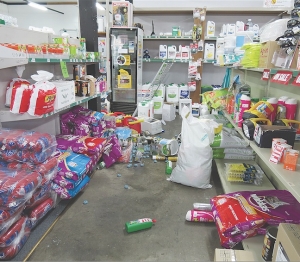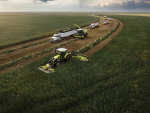The quake was centred near the town of Eketahuna in the Tararua district but was felt to varying degrees throughout the country.
For many dairy farmers, the loss of power right on afternoon milking time was the biggest problem. Jim Galloway who farms near Eketahuna says his cows were spooked by the quake. “I was about to get into the shed when they suddenly turned around and came back to me,” he says. Jim Galloway says he was aware that some milk had to be dumped because of the quake.
A major focus was on Fonterra’s processing plant at Pahiatua. Robert Spurway, Fonterra’s director of operations, told Dairy News that the plant was shut down to allow structural engineers to look at the storage building on the site.
“We needed the structural engineers to look at one building where we noticed there’d been a bit of movement. In the storage area we had a sprinkler give way as a result of the movement so we had water across the floor which required a cleanup. We also noticed some of the steel structure had moved against the concrete which may need bolting down. There were also some small cracks in the concrete.”
Spurway comes from Christchurch and has a good understanding of earthquake damage and the effect on staff, their families and the business itself. He says it was pleasing to note there was no damage to the actual processing plant or to the area where chemicals are stored. One pump came off its foundations, but that was easily put back in place.
“We have a business continuity plan which many businesses have and it covers a range of threats to our normal operation, and an earthquake is one of those. We were able to make a business continuity call just after the quake and the first priority was ensuring the safety of our staff and suppliers.”
Spurway says there was little disruption to the business despite the fact that the plant had to close down for about 24 hours.
“Overnight we had about a dozen calls to our call centre, all about farms that had experienced outages which had delayed their milking so they were making inquiries about what time the tanker was turning up. We collected all milk from farms overnight and will continue to do so. It’s a fairly normal course of action for us to divert milk from one plant to another and we had the capacity in the region to do that for as long as we need to. We used the Longburn plant which is not operating at present as a transfer station to keep the tankers on the road and then shipped the milk from Palmerston North to our plant near Hawera by rail or road,” he says.
















